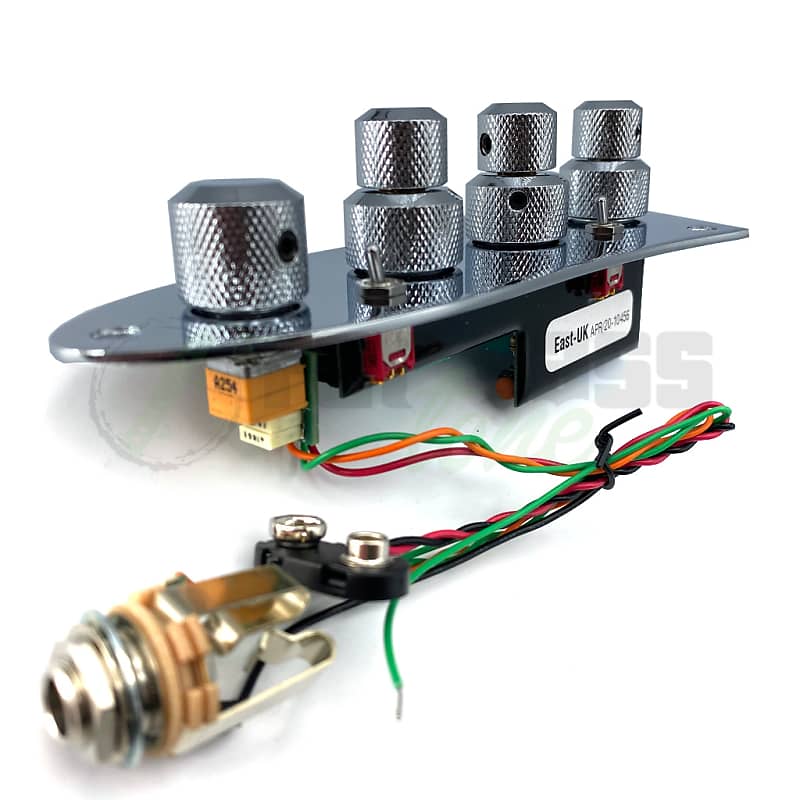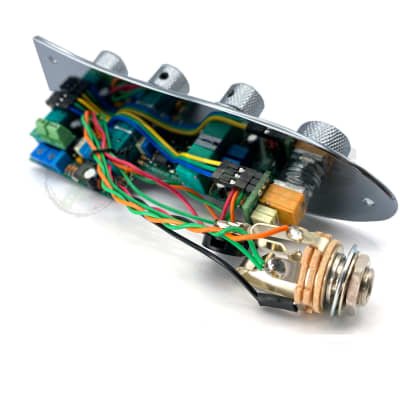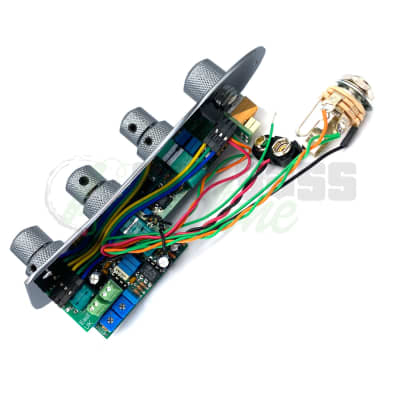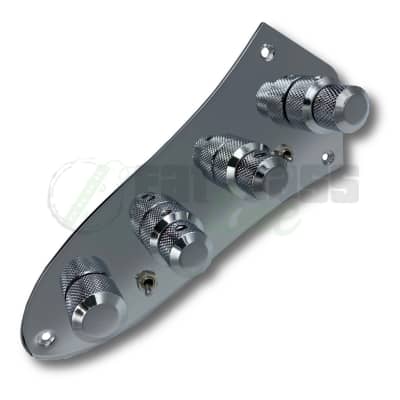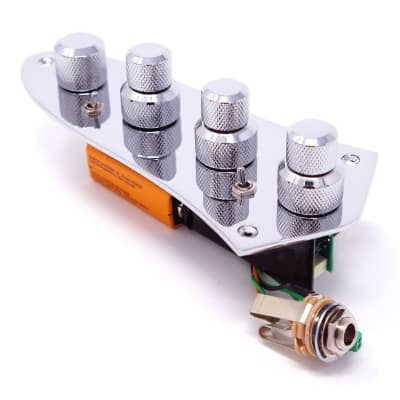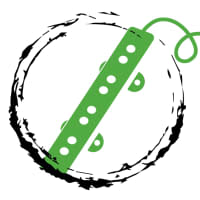3 Band -- 4 Knob, 2 Switch:
Volume/Blend Stack -- Treble/Bass Stack -- Mid/Frequency Stack -- Passive Tone -- Active/Passive Switch -- Pickup Switch
A very gentle built-in contour gives immediate color without detracting from the basic sound of any bass.
The J-RETRO 01 DELUXE is designed to fit directly into 'jazz' style deluxe basses, without modification to the instrument in most cases. Its high quality circuit uses three stacked and one single knob. Controls and function include an active blend circuit, 3 band equaliser with bass, variable frequency mid, treble plus bright function, and a passive tone, which functions in both active and passive modes.
The active blend circuit prevents the loss associated with many passive basses where, when both pickups are up full, the signal from one pickup feeds into the other and vice versa.
However, a switch is included to allow a passive equal mix of both pickups. A second switch - basic "get-you-out-of-trouble" passive mode is included in case the battery dies in crucial circumstances, and this mode allows some useful settings too.
EASY TO FIT, NO ROUTING OR MODS TO MOST J DELUXE STYLE BASSES.
It can be used in more standard "jazz" style basses, but the jack will need to be fitted to the side of the bass, as is the case with jazz deluxe style basses.
***NOTE : John East preamps use an active blend. In passive mode, the blend pot does not function. Therefore, a player can use the pickup switch to alternate between both pickups on or the bridge pickup on only. For most players, the passive mode is a ‘get out of trouble’ mode for situations such as live gigging where a battery failure occurs. ***
VOLUME & BLEND (Knob stack nearest the neck pickup)
VOLUME
The upper knob is the Volume.
This knob has active circuitry after it so that the feed to your amplifier is a low impedance drive.
BLEND & PICKUPS SWITCH
The lower outer knob is the Blend balance for the pickups.
Turn it fully clockwise for the neck pickup alone and fully anti-clockwise for the bridge pickup. The midway position, which has an indent, gives an equal mix of both pickups.
The balance between the pickups is continuously variable with progressive level compensation towards the single pickup settings.
BASS & TREBLE (The middle knob stack)
TREBLE (+12dB @ 3 kHz, -12dB @ 1kHz)
The upper knob is the Treble control with boost and cut. The central 'flat' position is indented. The cut settings work on lower frequencies compared to boost to give a deeper sound when the top is rolled off.
BRIGHT (+8dB @ 7kHz)
Pull the Treble knob for the Bright setting.
BASS (+15dB @ 50Hz)
The lower outer knob is the boost only Bass control. The frequency band of boost gets progressively lower as the boost is increased. An indent midway is included to aid the setting of this control.
MID LEVEL & FREQUENCY (The knob stack nearest the jack)
BOOST/CUT (+/- 12dB)
The upper knob controls the amount of Midboost or cut at frequencies according to the setting of the Frequency knob. The midway indent is the 'flat' position.
FREQUENCY (150Hz - 3kHz)
The lower outer knob is continuously variable and sets the Mid frequencies for boost or cut.
ACTIVE PASSIVE SWITCH
(By the jack) Towards the jack for active, the opposite for passive.
PASSIVE TONE (Single Knob)
PASSIVE TONE Conventional passive tone which acts directly on the output of each individual pickup. Since pickup signals are separated until they reach the electronic blend stage, a dual pot is required in order that there is an individual passive tone section for each pickup.
POWER
The power is switched on automatically when a mono jack is plugged into the socket.
